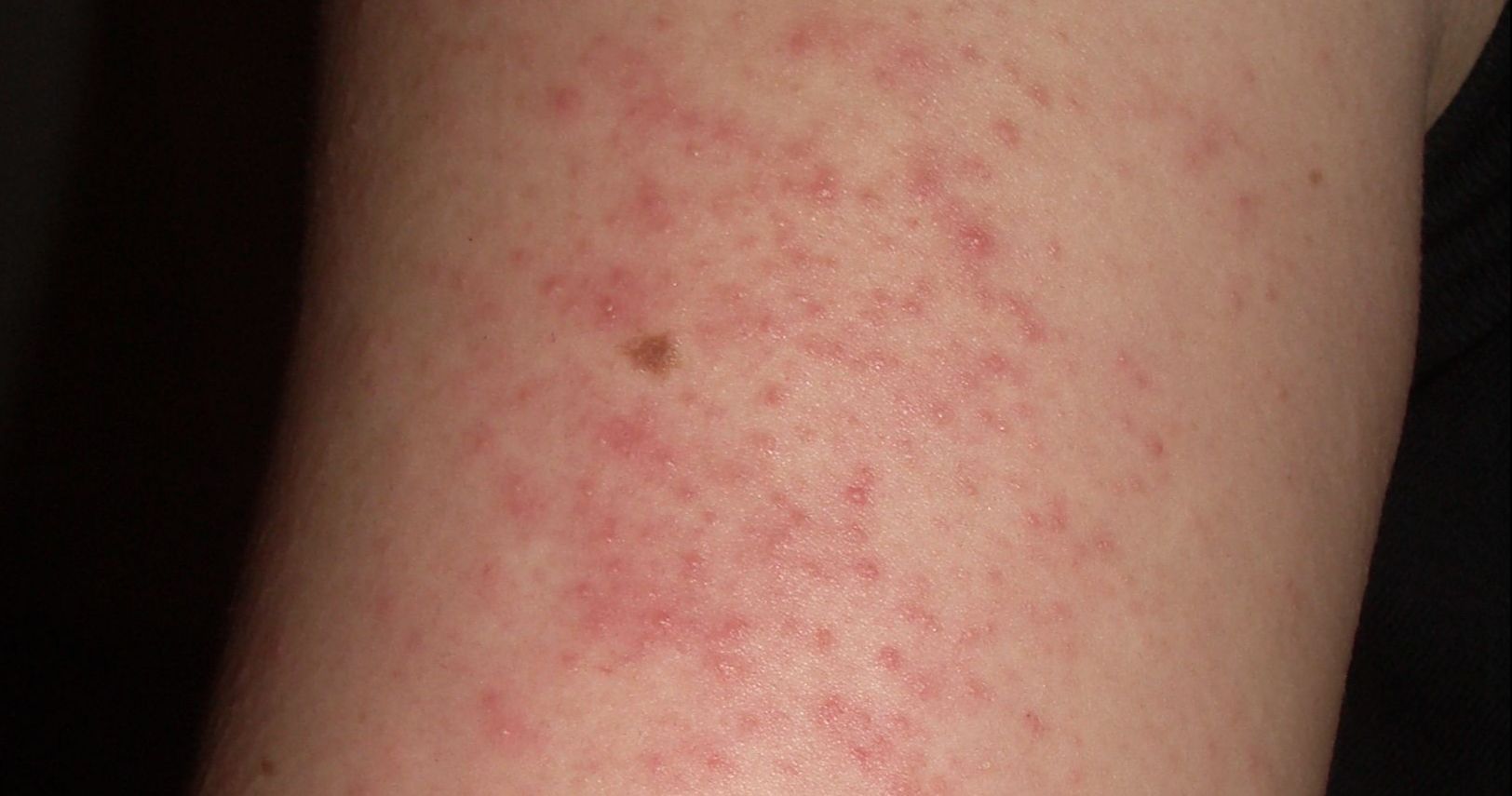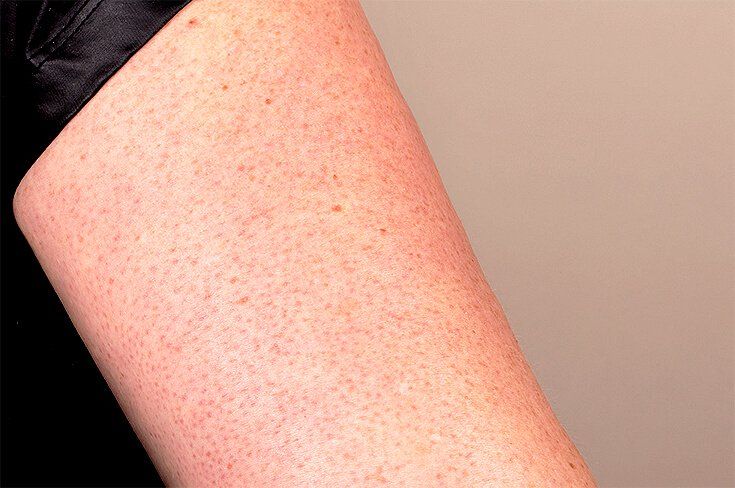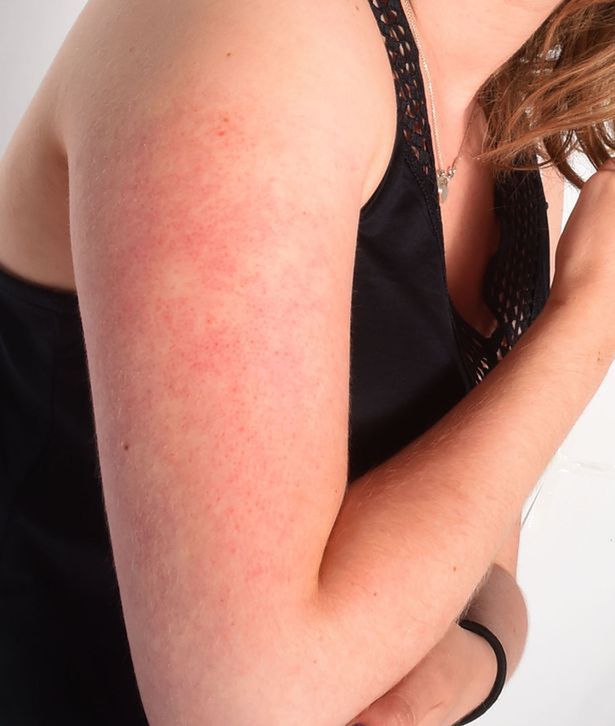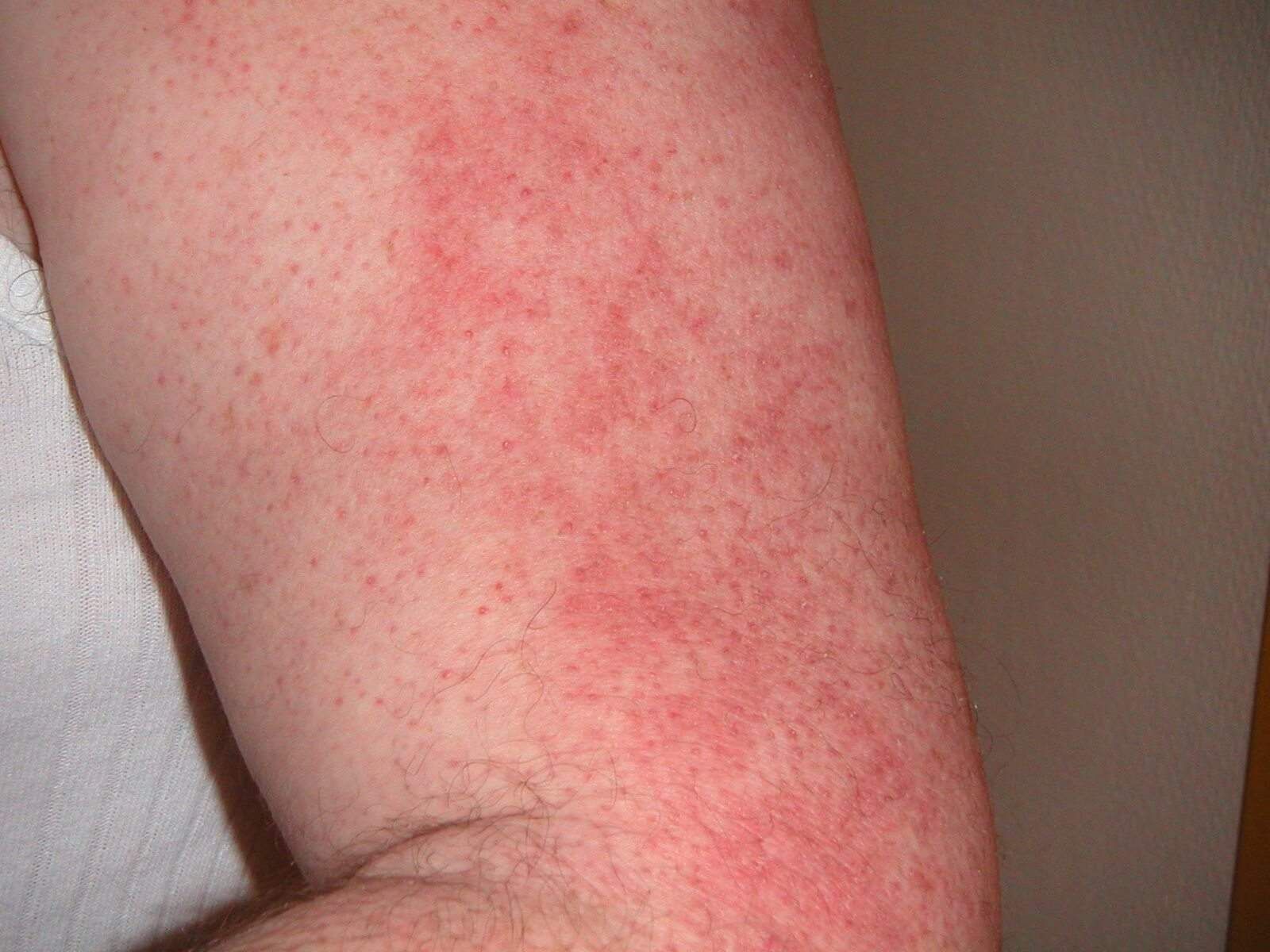Guess what? As you may well know, cold weather, central heating and low humidity can play havoc with your skin. Working in a warm office or a cold one, walking around air-conditioned shops, watching TV with an open fire and central heating dries the air which in turn dries your skin.
We all want nice arms, but when they end up looking like chicken skin I always want to cover them up.
A lot of people, myself included, end up getting these little red bumps on the backs of their arms and none of us seem to know what to do about them.
So what's causing these annoying red bumps? And more importantly, how on earth do we make it stop?
It's called Keratosis Pilaris
It's a very common condition that while overall harmless, does cause small, pink or red bumps to appear on your skin, usually on your upper arms, thighs, or buttocks.
It can be a little itchy at times, but people are often more concerned with the reddish rash on their arms that some people say feels like sandpaper.
What causes it?
It's actually caused by a build up of keratin. The keratin is supposed to protect your skin from infections, but if there is too much it will block the hair follicles causing bumps.
It's often worse when the weather is dry, or if someone has naturally dry skin.
Those with eczema have also noticed a lot of outbreaks, and it is more common in women, children, teenagers, or those who are overweight.
People who have a Celtic ancestry also are more likely to notice the bumps appearing on their arms.
How do you get rid of Keratosis Pilaris?
While there is no cure, there are ways to alleviate the frequency of the keratosis.
A dermatologist may be able to prescribe you a topical cream that will help remove dead skin cells, making it less likely that the keratin will clog your pores. They often contain lactic acid to help slough off everything that is causing issues.
They may also suggest microdermabrasion, chemical peels, or retinol creams, but all of these have the potential of causing more redness or irritation depending on your skin.
But if you want to treat it without these more expensive methods, there are a few things you can do at home.
Home remedies for Keratosis Pilaris:
1. Exfoliation - The most important thing you can do for your skin is to make sure it's properly exfoliated. It's the easiest way to prevent them from appearing.
Using a gentle and natural scrub will help you see improvement in as little as a few weeks. It's going to help remove all the dead skin, letting the follicles open back up and release the trapped hairs that cause the bumps.
Make sure you keep it up regularly, but don't just try to scrub off the bumps in one shot. That will just cause a bunch of irritation and won't give you a long-lasting result.
2. Vitamin A - Vitamin A may help improve your overall skin health. It's been known to help with acne as well as Keratosis.
It reduces inflammation, so all you'd need to do is apply the liquid from the inside a capsule as a topical lotion. Rub it on to the affected areas, but make sure to stay out of the sun after because Vitamin A will make your skin sensitive to the sun.
3. Diet Changes - Even without all these other things, the most important thing that you can do for your skin is to stay hydrated. Drink plenty of water and supplement it with fresh fruit and veggies.
Foods rich in Omega-3 fatty acids also is known to help your skin maintain it's moisture balance.
You should always confirm with your doctor before beginning treatment, but at least you'll know just what to do!
More from Shared:
8 Places On Your Body You Should Always Check For Skin Cancer
Everything You Need To Know About Your Skin Type And How To Take Care Of It Perfectly
13 Natural Cures For Instant Relief From Irritating Skin Conditions
The Unsettling Effects Stress Has On Your Skin
Source - Natural Living / Mayo Clinic / WebMD / HealthLine




